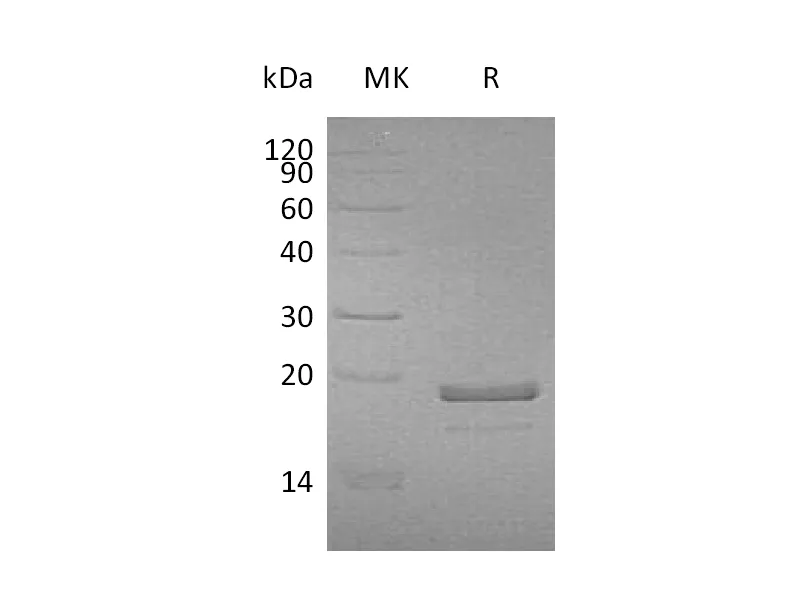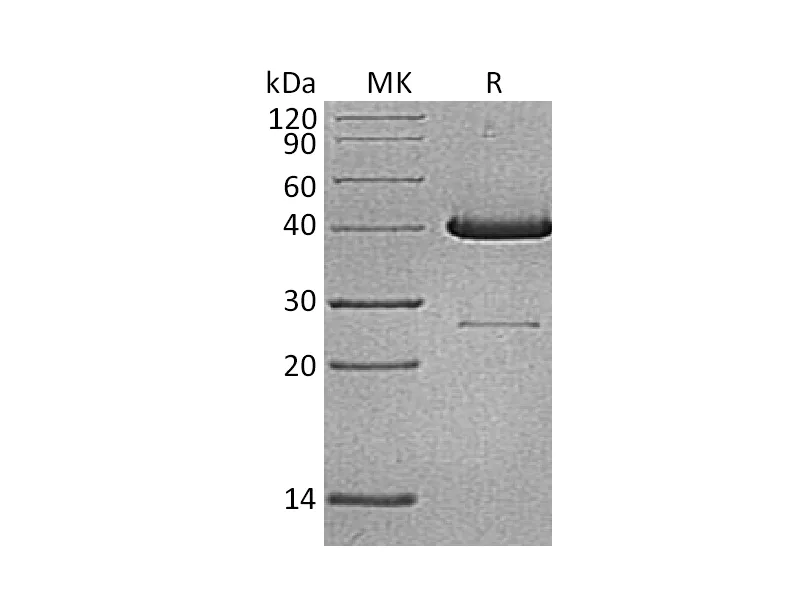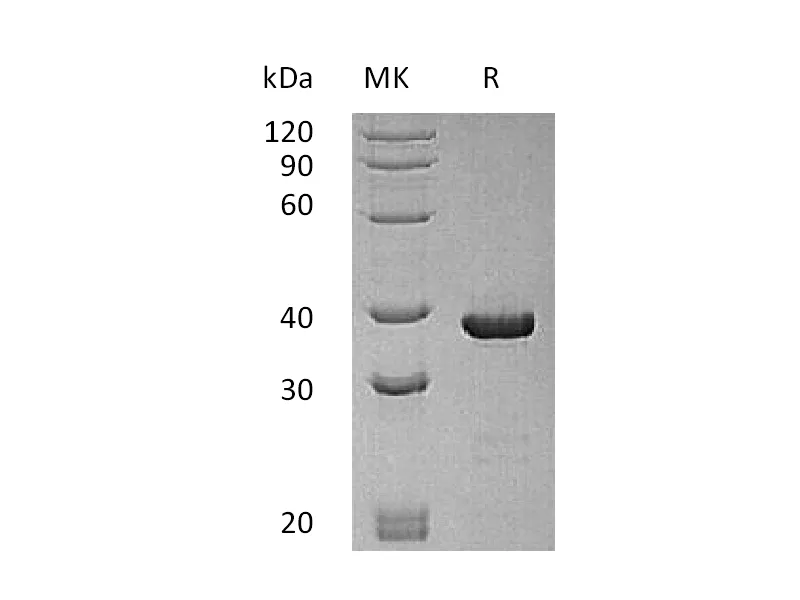| 产品名称 |
Recombinant Mouse TIM-3 (C-6His) |
| 英文名称 |
TIM-3/HAVCR2/TIMD3/T Cell Immunoglobulin and Mucin Domain-3 |
| 纯度 |
Greater than 95% as determined by reducing SDS-PAGE |
| 内毒素 |
<1 EU/µg as determined by LAL test. |
| 蛋白构建 |
Recombinant Mouse T Cell Immunoglobulin And Mucin Domain-3 is produced by our Mammalian expression system and the target gene encoding Arg20-Arg191 is expressed with a 6His tag at the C-terminus. |
| Accession |
Q8VIM0 |
| 表达宿主 |
Human Cells |
| 种属 |
Mouse |
| 预测分子量 |
20.2 KDa |
| 制剂 |
Lyophilized from a 0.2 μm filtered solution of PBS, pH 7.4. |
| 运输方式 |
The product is shipped at ambient temperature.Upon receipt, store it immediately at the temperature listed below. |
| 稳定性&储存 |
Store at ≤-70°C, stable for 6 months after receipt.Store at ≤-70°C, stable for 3 months under sterile conditions after opening. Please minimize freeze-thaw cycles. |
| 复溶 |
Always centrifuge tubes before opening.Do not mix by vortex or pipetting.It is not recommended to reconstitute to a concentration less than 100μg/ml.Dissolve the lyophilized protein in distilled water.Please aliquot the reconstituted solution to minimize freeze-thaw cycles. |
| 分子别名 |
| Hepatitis A virus cellular receptor 2 homolog;HAVcr-2;T-cell immunoglobulin and mucin domain-containing protein 3;T-cell immunoglobulin mucin receptor 3;T-cell membrane protein 3;Tim3; Timd3 |
| 背景介绍 |
| T cell immunoglobulin and mucin domain-3 (TIM3), also called hepatitis A virus cellular receptor 2 (HAVCR2), is a transmembrane glycoprotein of the TIM family of immune regulating molecules and plays an important role in the Th1-mediated immune response. TIM3 is expressed on the Th1 cells, CD8 T-cells, monocytes, and dendritic cells, but not on Th2 cells. TIM3 expressed by monocytes and dendritic cells facilitates phagocytosis of apoptotic cells and up-regulates cross-presentation of apoptotic cell-associated antigens through interaction with phosphatidylserine. Engagement of TIM3 by its ligand galectin-9 induces a range of immunosuppressive functions which enhance immune tolerance and inhibit anti-tumor immunity. Stimulation of TIM3 with an agonistic antibody promotes inflammation through the activation of innate immune cells. TIM3 is also regarded as a potential target molecule for immunotherapy. TIM3 and programmed cell death 1 (PD-1) as two important coinhibitory regulators of T cell responses, have been implicated with the T-cell dysfunction or exhaustion associated with chronic HBV infection including HBV-related HCC. |
注意事项
本司产品仅用于科研,不用于临床诊断和治疗




